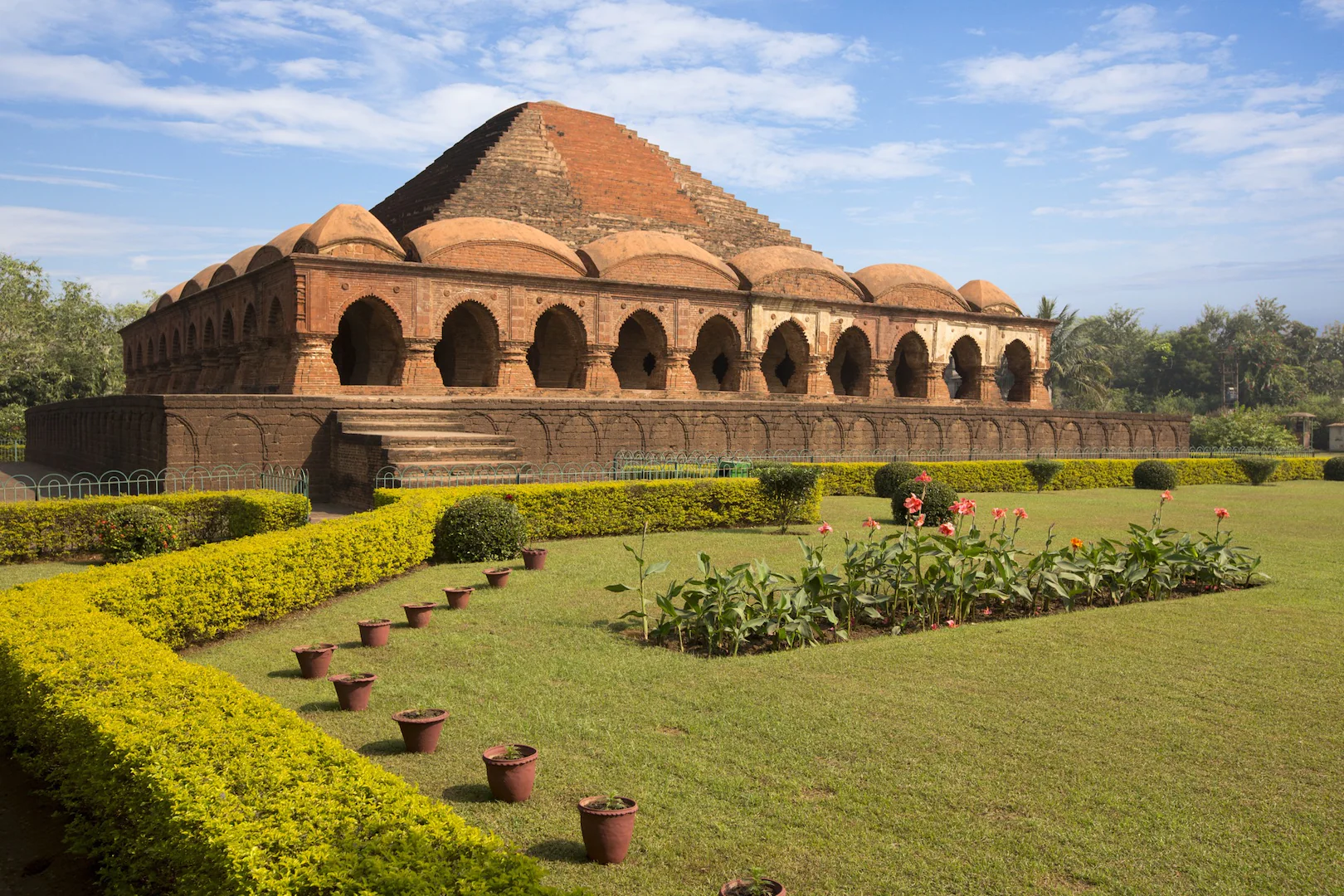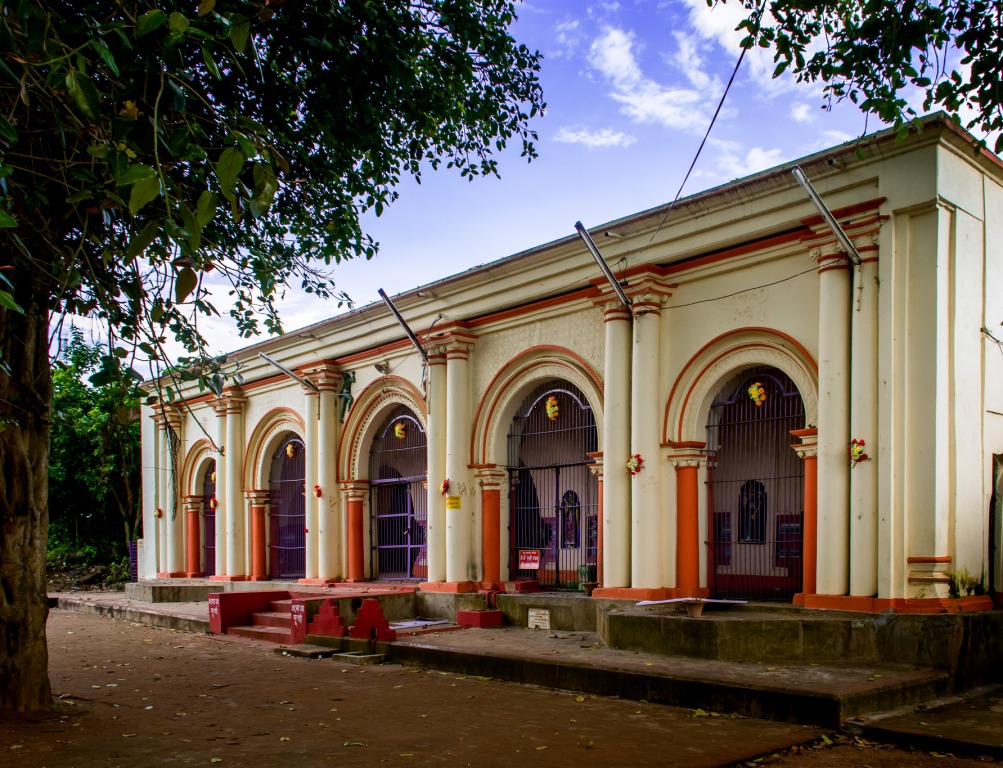Introduction
The origins of the Rajas of Bishnupur is somewhat clouded in mystery. According to O'Malley, all through the centuries, they were acknowledged as the kings of Bagdis. However, the Rajas of Bishnupur and many of their followers have laid claims to their being Kshatriyas linked to the Kshatriya clans of northern India. The claims seem to have originated or gathered momentum at a later period when assimilation of the region with the Proto-Indo-Europeans gained firm roots. The Rajas of Bishnupur were also known as Malla kings. Malla is a Sanskrit word meaning wrestler but there could be some links with the Mal tribes of the area, who had an intimate connection with the Bagdis.

Rasmancha
The Rasmancha is a historical temple located at Bishnupur, Bankura
district, West Bengal, India. It was commissioned by Mallabhum king
Hambir Malla Dev (Bir Hambir) in 1600 CE. Length and breadth of this
temple is 24.5 meter and the height is 12.5 meter. The base or altar
of the temple is made of laterite stone and upper part is made with
bricks. Upper structure looks like a pyramid. Middle part resembles
Bengali huts and the arches of the lower part resembles Islamic
architecture. During the Vaishnava Ras festival, all the Radha
Krishna idols of Bishnupur town used to be brought here to be
worshipped by the citizens. The annual festival was held till 1932.
Rasmancha in Bishnupur, West Bengal is one such historical building.
Established in 1600 AD by the King Hambhir, the Rasmancha was used
to display all the local idols in public during the Ras Festival
which stopped in 1932. The popular festival has been shifted to
grounds near a Durga temple. Rasmancha temple stands on a raised
square laterite plinth with a pyramidal superstructure. Three
successive circumblatory galleries, The arches of which are
decorated with terracotta lotus motifs.

Jor Bangla Temple
Jor-bangla Temple is also known as ‘Yorubangala’. This temple is
designed as per Hindu temple architecture that arose in Bengal. The
style involves two structures that resemble the traditional village
huts of the region, one that serves as a porch, in front of the
other that serves as a shrine. Each structure has a roof of the
ek-bangla (or do-chala) style, with two curved segments that meet at
a curved ridge. Jor Bangla Mandir is one of the few temples of
Bishnupur which is in good condition. The fondness with which my
guide explained the Jor Bangla Mandir, I could make out it was his
favorite Chala style temple. I too felt this is one of the must see
temples of Bishnupur. The terracotta panels are undamaged and effect
of wearing out is not prominent yet. It was built by Raghunath
Singha II in 1655 A.D. The temple platform is squarish and measures
12m by 12m we were told. These panels have detailed scenes from the
Mahabharata, Ramayana and Krishna-Leela. The prayer room was shut.
It houses the idol of Shadbhuja (6 hands) of Shri Chaitanya. The
idol is not worshiped anymore.
The do-chala (two roofs) style was used by Muslims and exported to
other parts of India. The 17th century architecture of Delhi,
Lahore, Gulbarg has monuments with this style. By 18th century this
style became popular in parts of Rajasthan and can be seen in the
palace balconie sand garden pavilions there. There is another ‘Chala
style’ temple which I hope to see in future and that is in
Bangladesh. It is the ‘Gopinath Jor-Bangla’, a Hindu temple located
1km (0.62 mi) east of Pabna District in Bangladesh.

Shyam Rai Temple
Shyam Rai Temple of Bishnupur, the oldest temple built in this
style, is also one of the best examples of Pancha Ratna Style of
architecture. Built in 1643, the Shyam Rai Temple is also one of the
earliest temples of Bishnupur. Built by Malla ruler Raghunath
Singha, the building is an exquisite example of medieval Bengali art
& architecture. Built entirely with clay bricks and clad in burnt
clay(terracotta) tiles, Shaym Rai Temple is a marvel both in terms
of its design and construction.
Like most of the temples in Bishnupur, this temple is also dedicated
to Lord Sri Krishna and Sri Radha. The name Shyam (Krishna) – Rai
(Radha) has been derived from the colloquial names of the Hindu Lord
and his lovers. The temple is square in plan with a dimension of
11.4 meters each side. Each of the sides has three arched gateways
in the centre and elaborate terracotta carvings on the entire
surface. The roof of the building is flat curved ‘Chala’ type – a
unique feature of Bengali Architecture. Above the roof rises five
beautiful pinnacles – giving the name Pancha Ratna. While Rasmancha,
the only temple built before the Shyam Rai temple, has a very high
plinth (It can also be found in temples built later), this temple
has a very low plinth.

Mrinmoyee Temple
Mrinmoyee Temple is dedicated to Goddess Durga and is situated in
Bishnupur at Bankura district. It is a very old temple and is rich
in heritage. Durga Puja which is observed every year in this temple
is over 1000 years old. It is unbelievable, but true. It gets this
name because of the fact that the Malla dynasty used to rule then
and it was under their governance that this temple came up. It is
the oldest Durga Puja in Bengal and it still beholds its rich
culture, in an undiluted way.
Raghunath was crowned as the first king of Malla dynasty at
Pradamnapur. King Jagat Malla shifted his capital from Pradamnapur
to Bishnupur because of the latter’s better positioning with respect
to safety. Bishnupur is mostly famous for its terracotta tradition,
but it also proudly is the place where the oldest Durga Puja of the
state happens. King Jagat Malla established the Mrinmoyee temple in
997 AD. Actually, Jagat Malla was ordered by Maa Mrinmoyee to build
this temple, in his dreams. The idol is made of Ganga clay. The 57th
generation of the Malla dynasty is there at present.